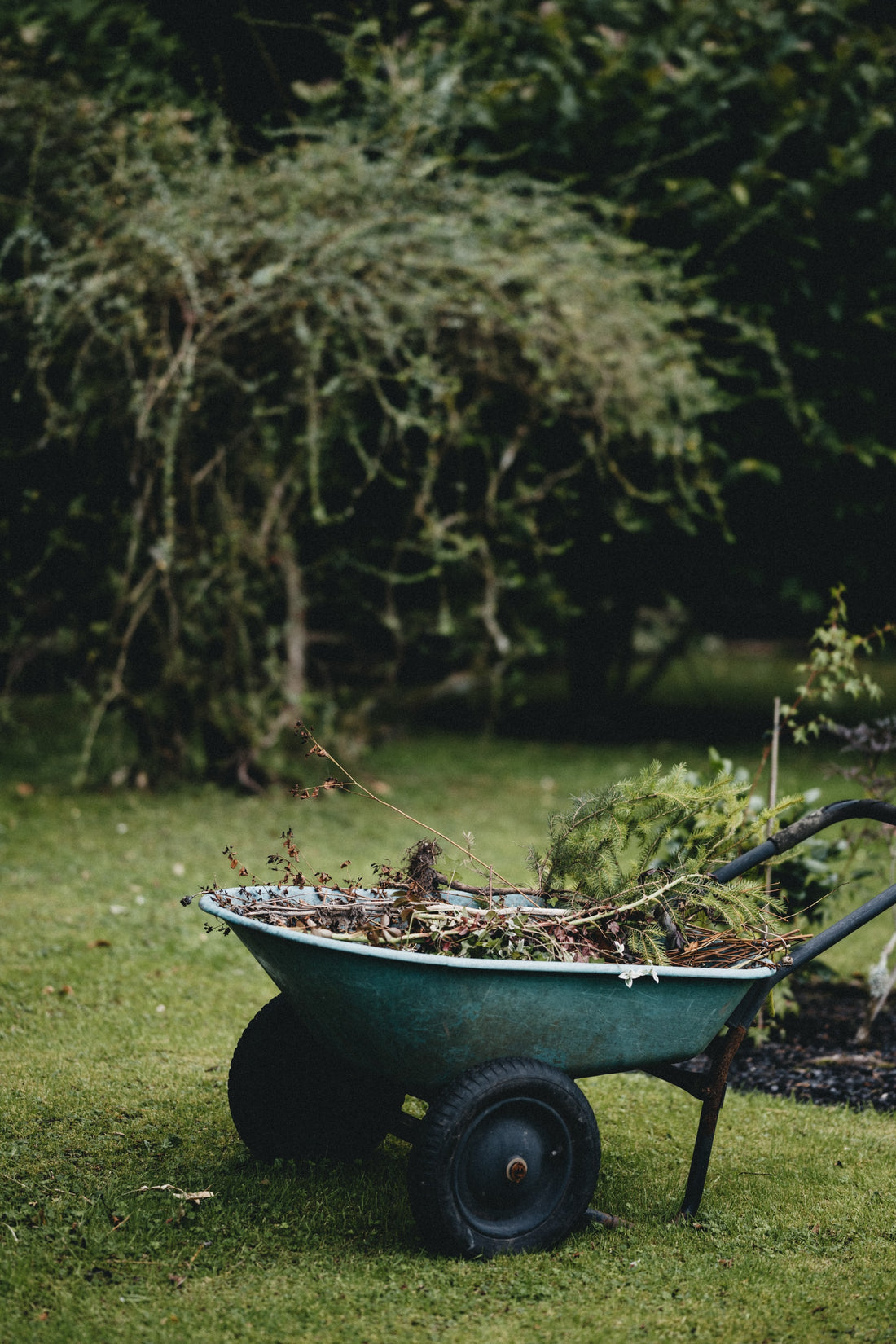There are many ways to create compost. The method most people are familiar with uses kitchen scraps. However, vegetable and fruit peelings aren't necessary to make rich, healthy compost. A compost made solely from yard waste also produces a fantastic result. It is also less labor-intensive to build and maintain.
What is Compost?
Compost is a combination of plant materials mixed together in a particular way to facilitate decomposition. As the material decays, it produces a nutrient-dense matter called humus.
Why Compost?
The humus produced through composting is rich in minerals, nutrients, and essential microorganisms. When compost is added to a garden, it boosts the fertility and health of the soil. These nutrients are diverse and slow-releasing, which means their benefits last a long time. The addition of compost to a garden improves overall soil drainage, stability, and moisture retention.
Composting also reduces landfill waste and all the costs associated with sending material to the landfill, like waste collection and fuel use. This is especially important as most landfills are in crisis and operating above capacity. The less material that goes to the landfill, the better for everyone.
Using compost saves money since it is free to make. The only cost is the minimal labor needed to gather material to add to the compost pile. Additionally, it reduces costs because it lessens the need for store-bought fertilizers. There is no need for chemical fertilizers, which often damage soil and natural ecosystems through runoff.
What Yard Waste Can Be Composted?
Most yard waste is compostable, including:
- Leaves (green and brown)
- Grass
- Wood chips
- Branches & Twigs
- Used potting soil
- Spent garden plants
- Weeds (without seeds)
- Pruned bushes
- Hay and Straw
Never add any material to the compost pile that has been chemically treated. This includes plants and grass that have been treated with chemical pesticides. Also, do not add any parts of the black walnut tree.
Black walnut trees produce a natural chemical that kills plants, and it's best not to risk that not breaking down and ending up in your garden!
How to Start a Compost Pile
Choosing a Location
A dry, slightly shady spot is ideal. This prevents the pile from drying out too much in the summer. Choose a location that is easily accessible and convenient to use. Placing it far away from where the compost material is located creates more work for you and reduces the probability of it being used consistently. Don't make it difficult for yourself!
The Compost Bin
There are many ways to set up a compost pile. Most people are probably familiar with the enclosed heavy-duty plastic compost bins available for purchase or, if you're lucky, for free from the town or state. These are great for composting a mix of kitchen scraps and yard waste. However, if you have a lot of yard waste, it won't fit in these types of containers.
To compost yard waste exclusively, it is best to build your own compost bin. The great thing about a yard-waste-only compost is that you don't have to worry about tightly enclosing it to prevent pests. Animals are attracted to kitchen scraps, not leaves and twigs! This opens up a lot of possibilities when it comes to the build.
A simple four-sided wooden box of sufficient size works great. A good starting size is 3-feet wide by 3-feet tall. Any bigger than this, and it will take a lot longer for the yard waste to turn into compost. If you anticipate needing more space to compost, building two boxes instead of making an extra-large one is best.
Re-purposed wooden pallets are great for building a compost bin. Wire mesh and wooden fence posts strung together are also simple compost bin building materials. One important key is to make sure there are gaps between the wood or wire so air can flow in easily; this facilitates the decomposition.
For compost bin building instructions, check out this Guide from the University of Missouri and this DIY Pallet Compost Bin from The Real Farmhouse.
Adding Material to the Compost Bin
The key to a successful compost bin is adding suitable materials in the correct amounts. There needs to be a balance between green nitrogen-rich material and brown carbon-rich material. If there is too much of one or the other, decomposition slows down.
The ideal formula is 2:1 browns to greens. Brown material includes dried leaves, newspaper, straw, sawdust, and branches. Green material includes fresh grass clippings, spent plants, weeds, and green leaves.
Shredded material decomposes faster than large pieces. If possible, shred leaves and break down branches before adding them to the compost bin. Another way to speed up the decomposition process is to keep the pile slightly damp (not soaking wet!) at all times. Lightly watering it a couple of times a week works well.
Once the compost bin is set up and you've begun adding material, all that is left is to wait. It takes six months to 2 years for the material to turn into rich garden-worth humus. The time it takes depends on what you are adding to the bin.



